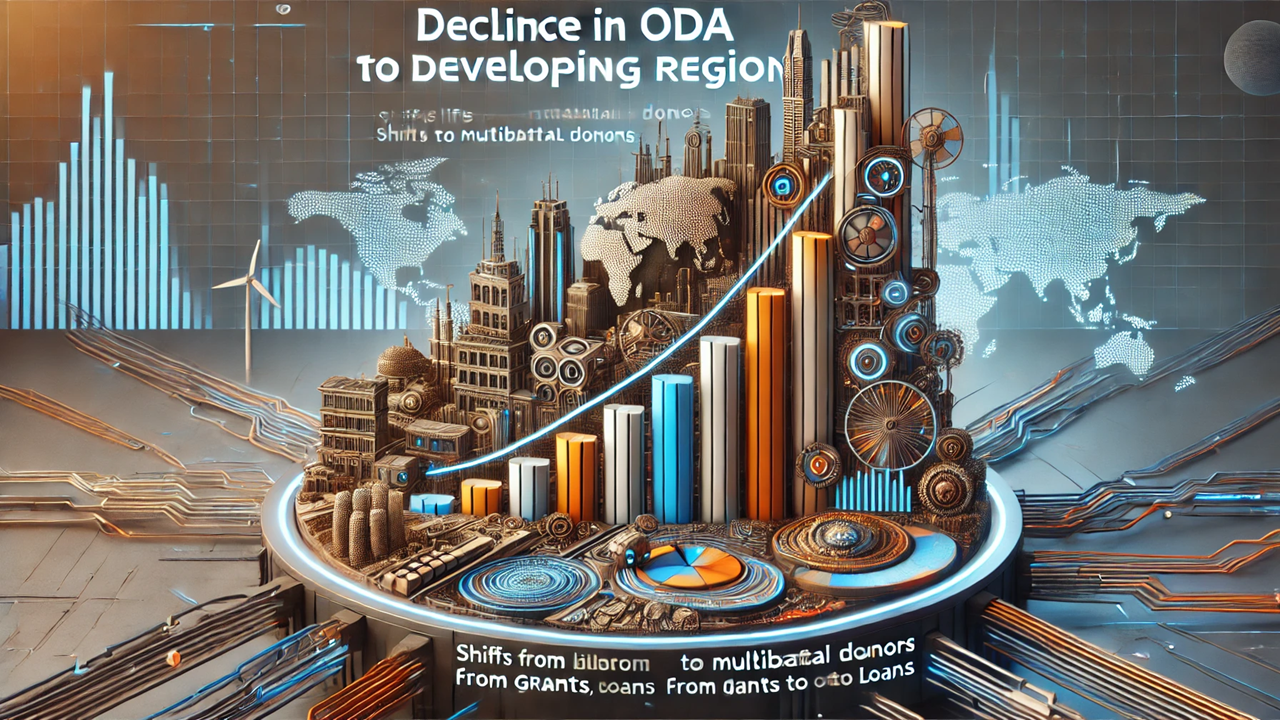Aid Under Pressure: Navigating Shifts in Global Development Assistance
The report "Aid Under Pressure: 3 Accelerating Shifts in Official Development Assistance" by the United Nations Global Crisis Response Group highlights significant changes in ODA distribution. Despite reaching a record high, aid to developing regions decreased, with a shift from grants to loans and increased focus on crisis response over long-term development. The report calls for renewed efforts to meet ODA targets and balance immediate needs with sustainable development.

The global landscape of Official Development Assistance (ODA) is undergoing significant transformations, as highlighted in the latest report by the United Nations Global Crisis Response Group (UN GCRG). Despite reaching a record high of $287 billion in 2022, ODA remains critically below the Sustainable Development Goals (SDG) 17 target. The report, titled "Aid Under Pressure: 3 Accelerating Shifts in Official Development Assistance," details how global crises, including the COVID-19 pandemic and ongoing conflicts, are reshaping the allocation and effectiveness of aid.
A Decline in Aid to Developing Regions
While the total global ODA has increased, the distribution tells a more troubling story. In 2022, aid to developing regions fell by $4 billion, with Africa, Asia, and Oceania experiencing a significant decrease of over 3.5 percent. This decline highlights a growing disparity, as developed countries and refugee assistance within donor nations saw increased funding. The report underscores the urgent need to address this imbalance to support sustainable development in the most vulnerable regions.
Major Shifts in ODA
The report identifies three major shifts in ODA that could impact the development aspirations of many countries. Firstly, there is a shift from bilateral to multilateral donors. While contributions from bilateral donors have decreased, multilateral donors have stepped up their support. Despite this shift, bilateral donors still provide the largest share of aid to developing countries. This change signals a potential realignment of aid strategies, emphasizing the need for coordinated multilateral efforts.
Secondly, there is a notable shift from grants to loans. Developing nations are increasingly relying on concessional loans, which raises their debt burden. This trend is particularly concerning for Least Developed Countries (LDCs), which are already struggling with debt distress. The reliance on loans over grants may hinder long-term economic stability and development. This growing debt burden can potentially destabilize economies and limit future growth prospects.
Thirdly, the increasing need for emergency responses to crises has diverted funds from long-term development projects. Humanitarian aid and support for refugees have grown rapidly while funding for debt-related actions has diminished. This shift creates a challenging environment for sustainable development financing, as immediate crisis responses often take precedence over long-term development goals.
Focus on Food, Energy, and Finance
The report also sheds light on the stagnation of aid in critical areas such as food, energy, and finance since 2016. These sectors are vital for addressing global crises but have seen minimal growth in aid allocation. In the food sector, aid for food security has increasingly focused on food assistance, with agricultural development aid remaining stagnant. This trend highlights the need for more balanced support that includes long-term agricultural investment to enhance food security. Meanwhile, support for renewable energy generation and distribution has become a key focus, with aid for energy sectors reaching a record high in 2022. However, there was also a rebound in aid for non-renewable energy sources, reflecting the ongoing challenges in balancing energy needs and sustainability goals. In terms of finance, ODA for debt-related purposes has plummeted to historic lows, with a strong focus on rescheduling and refinancing rather than debt forgiveness. This shift poses significant risks for developing countries already burdened with debt.
As the world grapples with multiple crises, the importance of renewing commitments to meet the 0.7 percent ODA target cannot be overstated. The report calls for enhanced efforts to balance crisis response with sustainable development financing. Addressing the major shifts in ODA—declining grants, increasing loans, and reallocating funds from long-term development to immediate crisis response—is crucial for supporting the world's poorest countries and achieving global development goals. The findings of "Aid Under Pressure: 3 Accelerating Shifts in Official Development Assistance" highlight the need for a strategic approach to ODA, ensuring that aid not only addresses immediate needs but also fosters long-term development and stability.
- FIRST PUBLISHED IN:
- Devdiscourse
ALSO READ
35,851 humanitarian aid trucks enter Gaza since October
Resumption of Humanitarian Aid Delivery to Gaza via U.S. Military Pier
UN Urges Israel to Restore Order in Gaza for Humanitarian Aid
Humanitarian Aid Faces Logistical Nightmare at Gaza Pier
US and UN Collaborate on Gaza Humanitarian Aid Security










